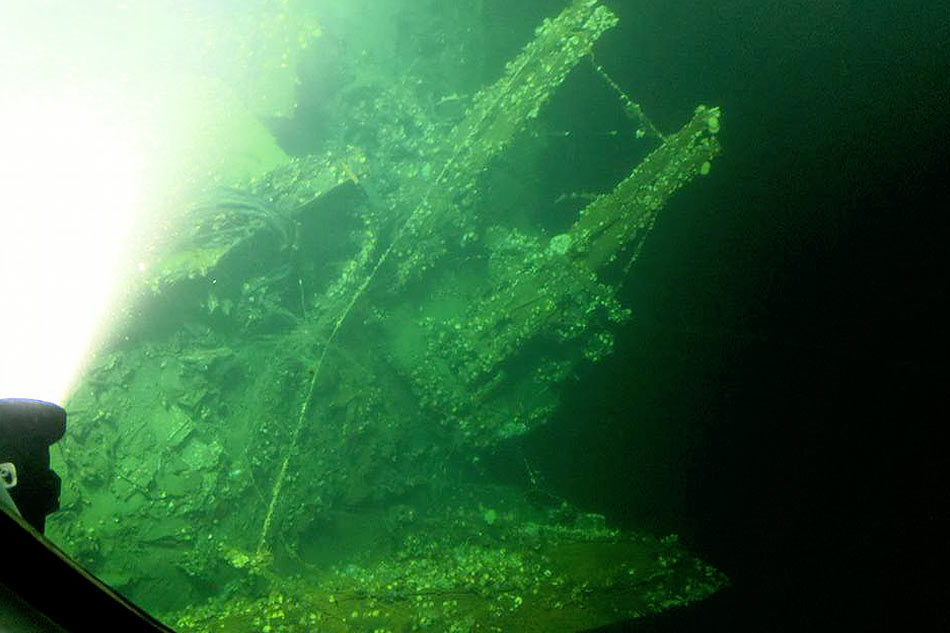Ormoc looks to boost tourism following discovery of WWII shipwrecks in bay | ABS-CBN
ADVERTISEMENT

Welcome, Kapamilya! We use cookies to improve your browsing experience. Continuing to use this site means you agree to our use of cookies. Tell me more!
Ormoc looks to boost tourism following discovery of WWII shipwrecks in bay
Ormoc looks to boost tourism following discovery of WWII shipwrecks in bay
Jenette Ruedas,
ABS-CBN News
Published Jan 25, 2018 09:05 PM PHT
TACLOBAN CITY – The city government of Ormoc is looking to boost local tourism and better educate students on local history following the recent discovery of wreckage of Japanese and American warships from World War 2 in the Ormoc Bay.
TACLOBAN CITY – The city government of Ormoc is looking to boost local tourism and better educate students on local history following the recent discovery of wreckage of Japanese and American warships from World War 2 in the Ormoc Bay.
City Hall said it intends to display at the city museum photos and videos from the wreckage handed over by expedition team.
City Hall said it intends to display at the city museum photos and videos from the wreckage handed over by expedition team.
Ormoc City Mayor Richard Gomez said this would help them boost the city’s tourism.
Ormoc City Mayor Richard Gomez said this would help them boost the city’s tourism.
“More than that, 'yung education na maibibigay niya sa mga bata, dito sa mga estudyante who will come and take a look at our museum,” Gomez added.
“More than that, 'yung education na maibibigay niya sa mga bata, dito sa mga estudyante who will come and take a look at our museum,” Gomez added.
ADVERTISEMENT
Gomez plans to sit down and talk with officials of the Japanese Embassy in the Philippines about the result of the research and the possibility of erecting a monument somewhere near the bay.
Gomez plans to sit down and talk with officials of the Japanese Embassy in the Philippines about the result of the research and the possibility of erecting a monument somewhere near the bay.
The warships, believed to have sunk during the Battle of Ormoc Bay in 1944, were found in a mission by R/V Petrel, an underwater research and exploration vessel commissioned by philanthropist and Microsoft co-founder Paul Allen.
The warships, believed to have sunk during the Battle of Ormoc Bay in 1944, were found in a mission by R/V Petrel, an underwater research and exploration vessel commissioned by philanthropist and Microsoft co-founder Paul Allen.
Its search started in November 2017.
Its search started in November 2017.
The initial aim was to explore the remains of the World War II battleship USS Cooper.
The initial aim was to explore the remains of the World War II battleship USS Cooper.
So far, the team has discovered 11 Imperial Japanese Navy ships, four American battleships and several merchant ships that sank during the war.
So far, the team has discovered 11 Imperial Japanese Navy ships, four American battleships and several merchant ships that sank during the war.
The Battle of Ormoc Bay was a series of air and sea battles between the Imperial Japanese Army and the United States during World War II.
The Battle of Ormoc Bay was a series of air and sea battles between the Imperial Japanese Army and the United States during World War II.
ADVERTISEMENT
ADVERTISEMENT



